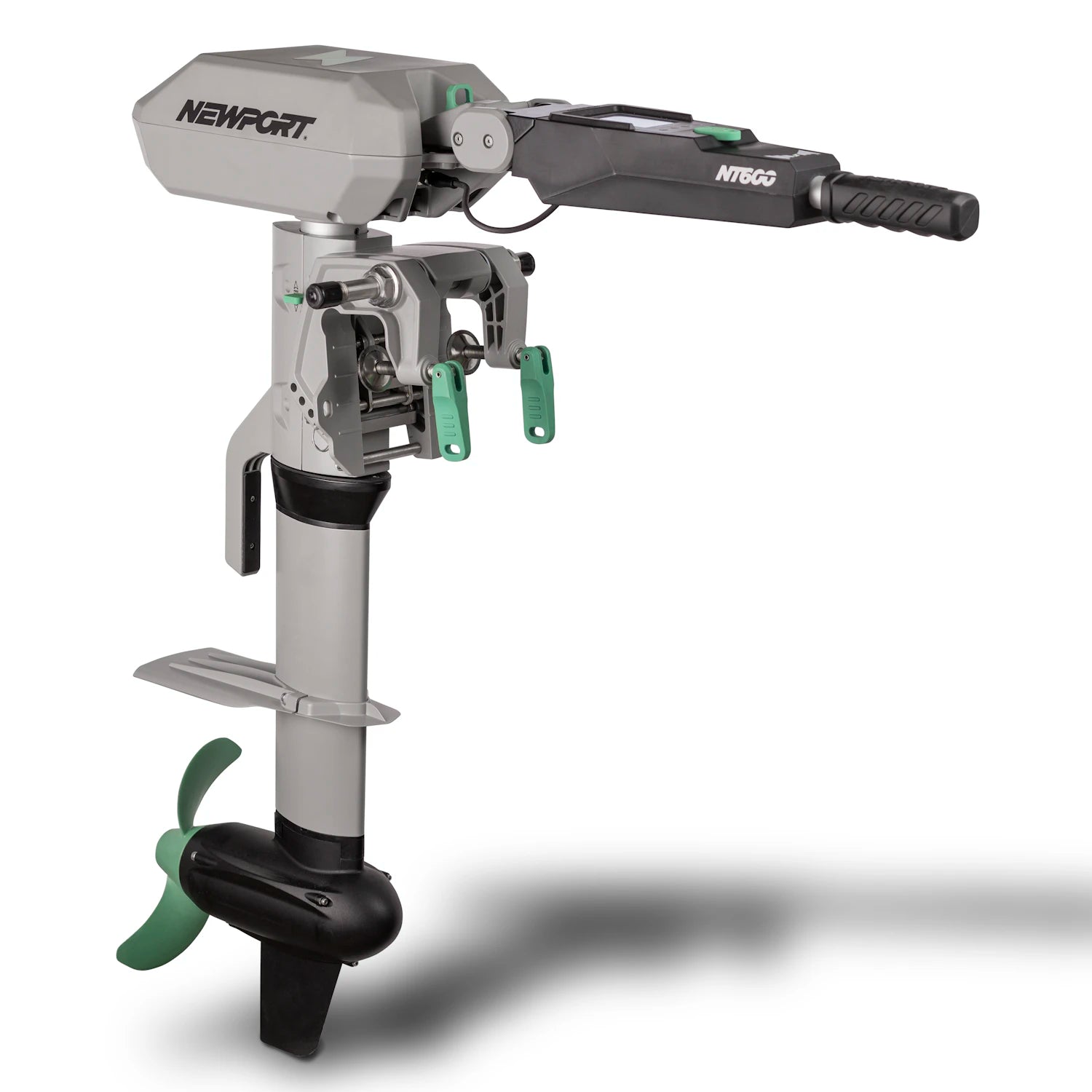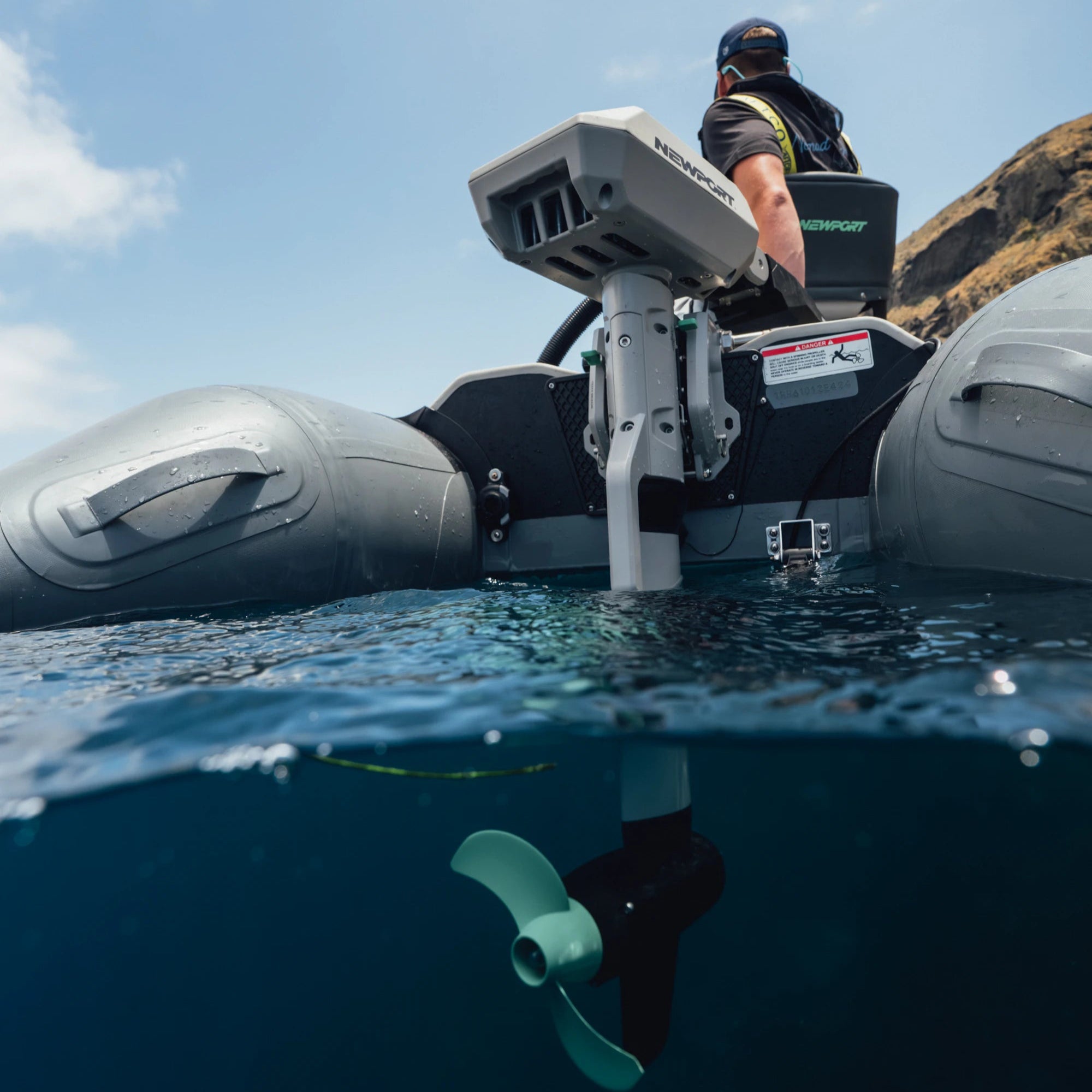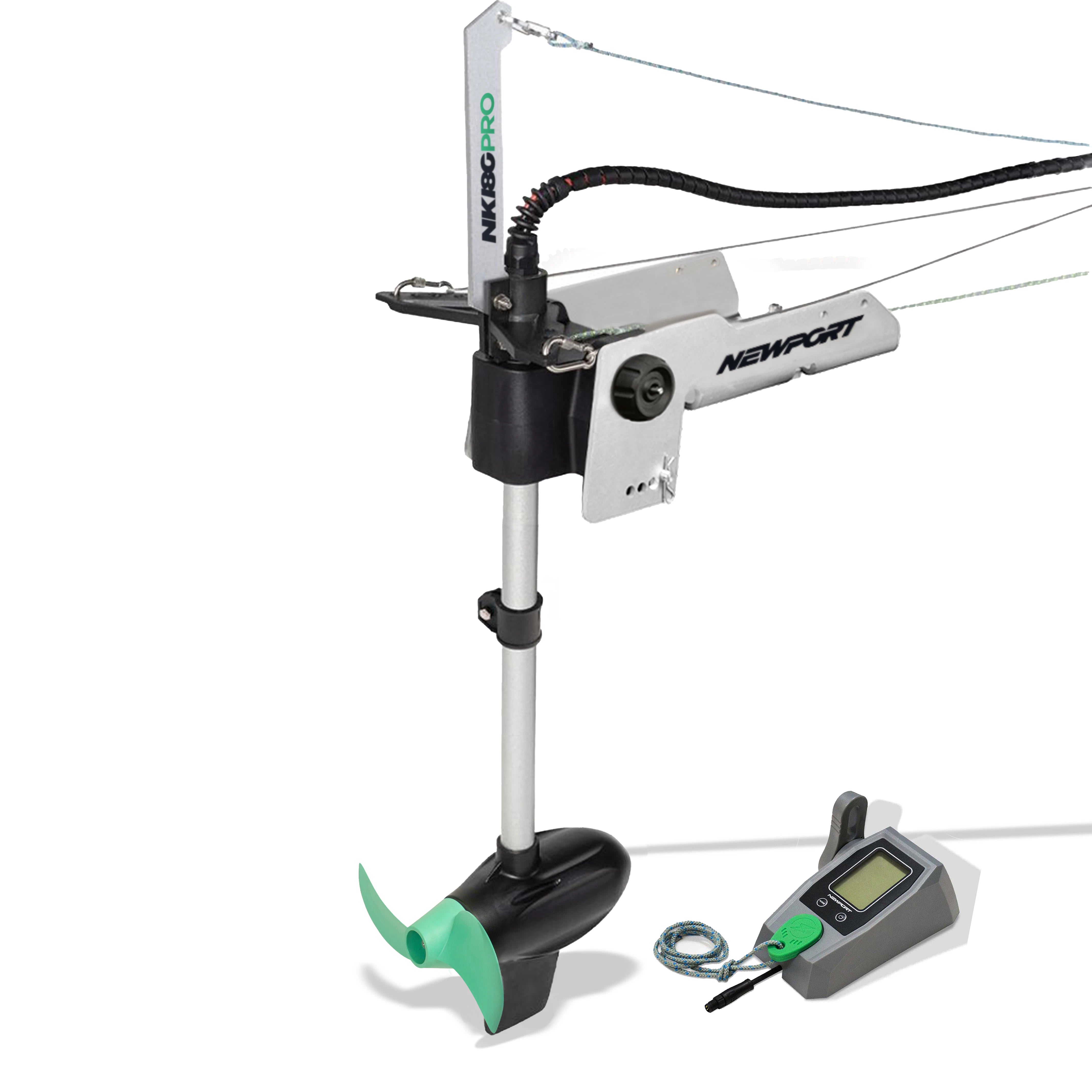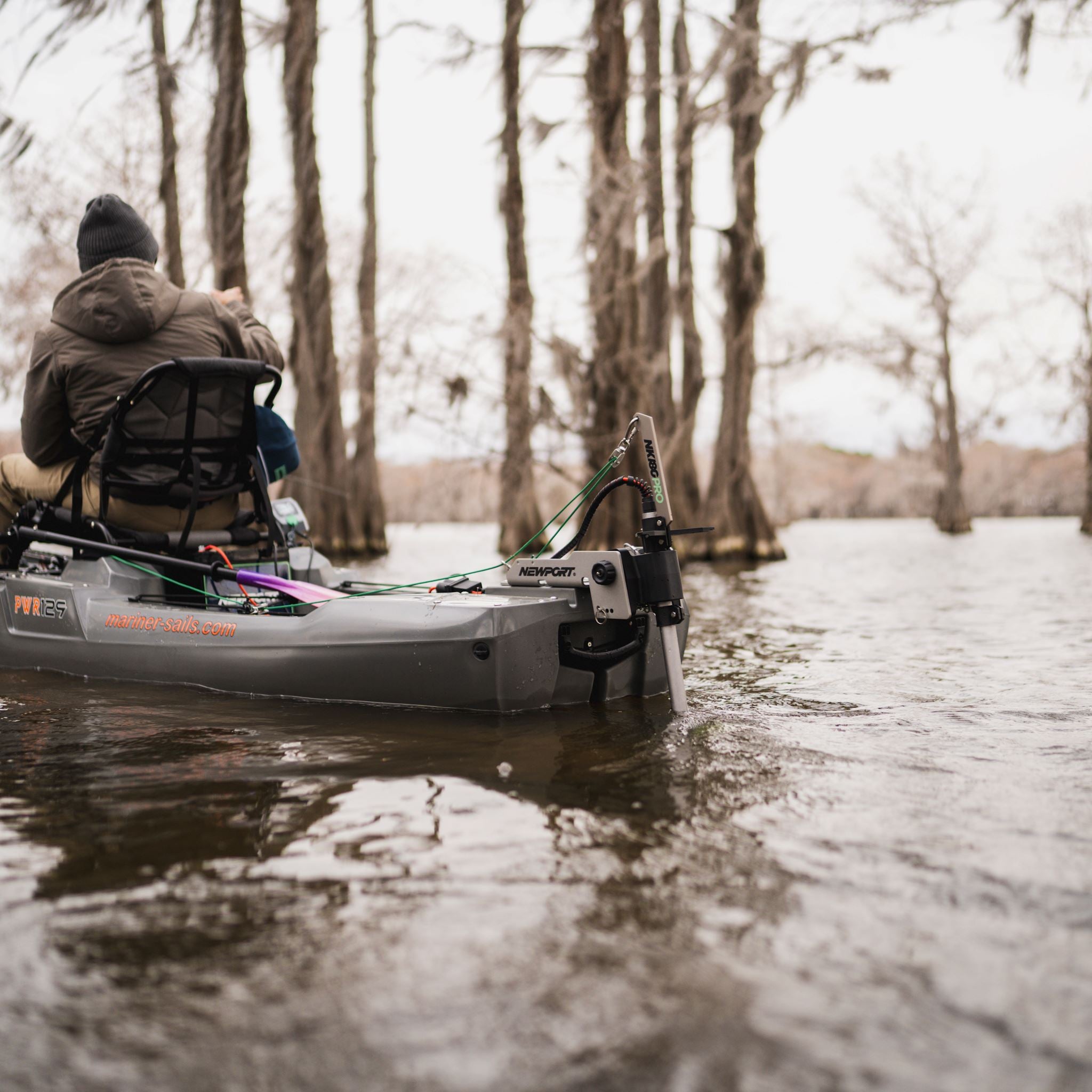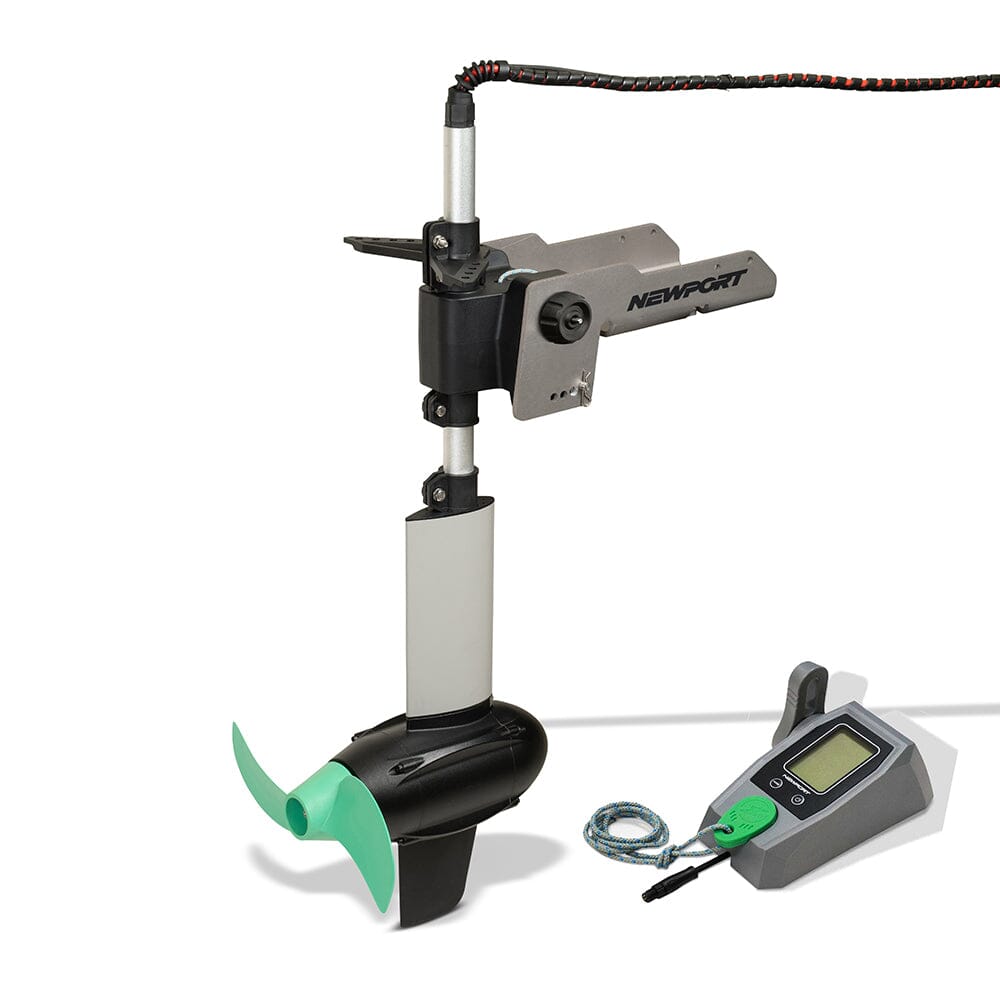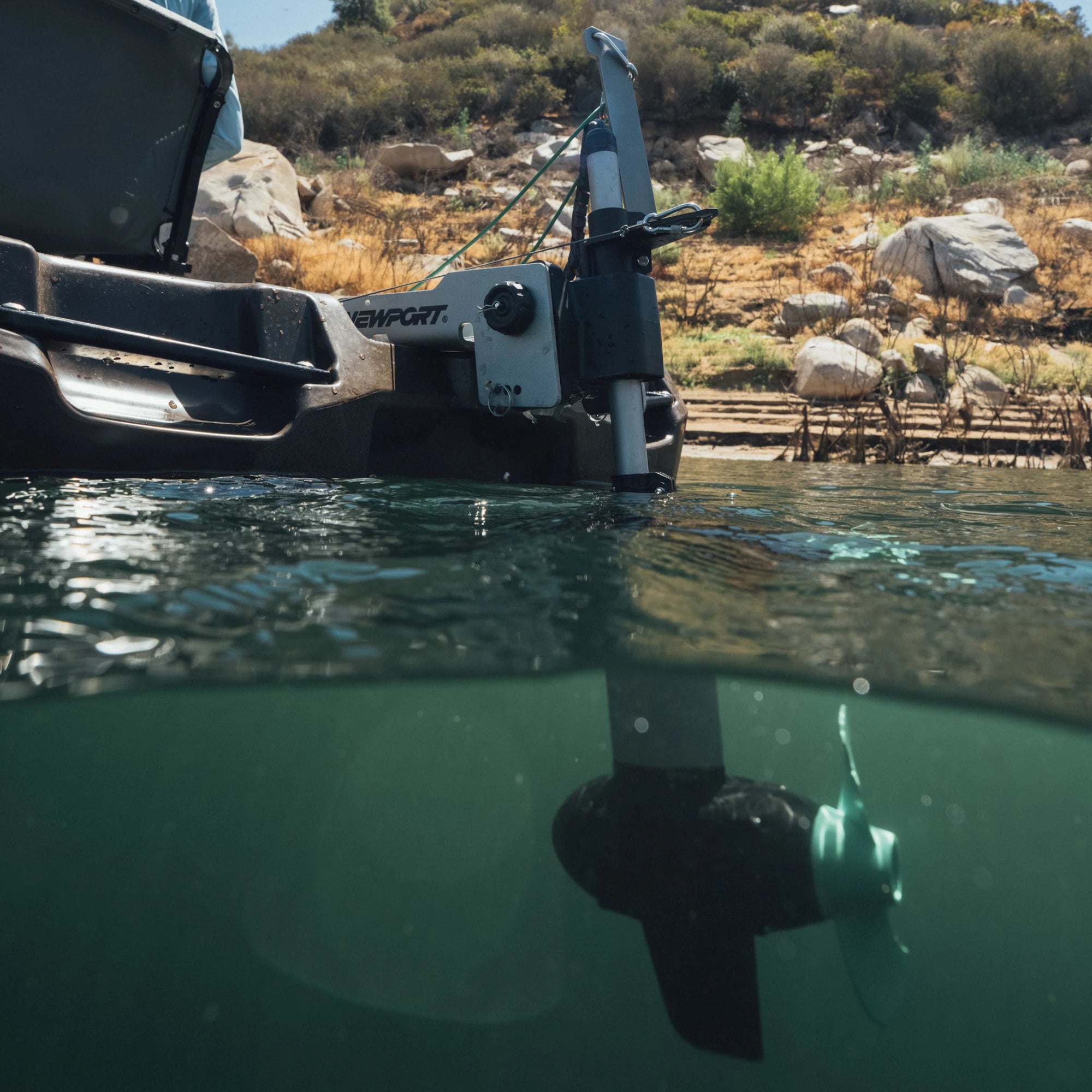Inflatable Boat Lifespan
Did you know the main reason inflatable boats bite the dust early is due to improper care? Inflatable boats can last anywhere from 2-25 years, primarily depending on the material they are made of, and how they are cared for! As you probably know, there are two types of inflatable boat fabric, PVC and CSM (commonly referred to as Hypalon, which is the proprietary eponym). PVC boats, in particular, have a reputation of being inferior to Hypalon because they “deteriorate quickly”. While Hypalon fabric is known for lasting decades, at a much higher price due to its UV resistant qualities.
PVC and Hypalon are two very different materials that have separate needs and exhibit different qualities. Most PVC dinghy issues are due to the owner treating it like a Hypalon boat and letting it bake in the sun, instead of giving it the proper care PVC requires. In this article, we will go over how the two materials compare and the best way to prolong the life of your PVC inflatable boat.
Summary:
-
PVC inflatable boats will last anywhere between 2-10 years depending on the manufacturer, the use, and care it receives
- Welded PVC boat will outlast those made with glues/adhesives
-
Hypalon (CSM) boats usually last 7-15 years, but can last as many as 20 years
-
Inflatable boats with extended UV ray exposure will not last as long as boats which are covered or kept indoors in a climate controlled environment
- Inflatable boats stored outdoors will see issues sooner and will ultimately have a much shorter useful lifespan
-
PVC inflatable boats are much more affordable than Hypalon (CSM) dinghies
About PVC
Construction
Polyvinyl Chloride, or PVC, can be produced in flexible and rigid forms, making it a versatile synthetic material. It is one of the world’s most abundantly produced synthetic materials, which makes it a low-cost material to work with. In the early days of this technology, PVC was very rigid and brittle, making it fragile and difficult to work with. However, the low cost of PVC motivated manufacturers to improve its physical and chemical properties. Using various additives, PVC fabric has been significantly improved from the brittle material it once was, to become one of the most versatile synthetics on the market. These additives helped modify the nature of PVC, allowing it to be applied in many different fields such as pipes, apparel, furniture and fabrics for inflatables. Recognizing the opportunity to produce inflatable boats out of PVC at a lower cost than traditional methods, manufacturers jumped at the opportunity and PVC dinghies were born.

Cost & Performance
Hypalon or CSM boats were dominating the market when PVC inflatables first arrived on showroom floors. While Hypalon was favored, it was expensive to manufacturer and heavy to handle. PVC on the other hand, addressed these shortcomings with its significantly lower cost, and lighter weight, cutting the price tag of a dinghy in half. Due to the better prices, increased portability and performance, PVC boat sales quickly began to grow. While PVC boats were easier to make, manufacturers didn’t focus enough on how they were built, which quickly lead to new issues.
Durability

Since PVC inflatable boats were still new to the market, manufacturers were still experimenting with their construction and durability. Without a proven performance record, manufacturers did not know the recommended care the materials required. At first, PVC boat seams were using glue, similar to how Hypalon dinghies are made. However, this was a mistake, the glue used on PVC boats was not as effective or durable as other materials. Within a few years, many PVC inflatable boat owners noticed that their boats suddenly started falling apart, sometimes while in use! To make matters worse, early PVC fabrics of the 80’s and 90’s were not treated with UV protectants. Over time with UV exposure, PVC inflatables were becoming brittle and losing their ability to retain air.

To address this issue, manufacturers began testing High Frequency Welding, instead of glue to hold the seams together. This welding technology uses electromagnetic waves to melt two PVC layers together. In theory, this technique would reduce the need for skilled labor and would create a stronger bond. Unfortunately, since this technique heated the fabric from the inside out, this sometimes leads to the surfaces of the fabric not getting heated enough to properly bond. This new yet imperfect seam construction lead to imperfect welds causing similar issues to adhesives. It was not until the invention of hot air welding that PVC dinghies became as reliable as their Hypalon ancestors. Hot air welding involved blowing hot air between two layers of fabric to melt the PVC, allowing two fabrics to be bonded into one durable piece.
While the anger and stigma against PVC boats were warranted in the early days, this is no longer the case. Significant advances in chemical manufacturing have improved PVC fabrics properties, and better construction methods have eliminated outdated technologies like cheap adhesives and High Frequency Welding. The PVC material today uses various additives that have dramatically improved the fabric and PVC inflatable boats. Today, UV stabilizers and protective coatings help negate the harmful effects of UV rays and prolong the life of PVC fabric. By selecting a dinghy with high-quality PVC fabric and constructed with hot air welding, you can be confident you will get a reliable inflatable boat.
Life Expectancy
You may be wondering, how long will my PVC inflatable boat last? That depends on a few factors, these include the quality of the fabric, how seams are constructed, how it is cared for, and what environment it is kept in. A high quality, well cared for inflatable can be expected to last anywhere between 5-10 years. This range is determined by where they are used and how well they are cared for. While PVC has improved dramatically over the years, UV degradation is still a major factor in the life of an inflatable. As PVC is exposed to UV rays for prolonged periods, the additives shift towards the surface and begin affecting the glue. Other elements such as heat and humidity can put a lot of strain on the inflatable as well. However, it won’t be the fabric that gives away first, but rather the glue that holds the accessories, transom, and seams that will fail. While the fabric can still be used past the life of the adhesive, everything else that holds the boat together and is glued onto it will have to be replaced. Replacing these parts and glue repairs often cost about as much or more than the boat itself.

One feature that helps ensure your boat will have a long usable lifespan is hot air welded seams. Hot air welds melt the fabric to itself and don’t rely on glue or friction. This binds two fabrics into one and allows the seams to last as long as the PVC fabric.
Hot and Humid Climates
If you live in a tropical climate and plan to keep your boat uncovered most or all of the time, you can expect a shorter lifespan ranging from 2-5 years. The heat and humidity will soften the glue, anything that is not heat welded will quickly come unglued. You will start to notice that the PVC becomes less flexible and more brittle the more it is exposed to UV and heat. Boats that use hot air welding will have longer lasting seams, but the accessories and the transom will not be able to withstand the climate unless the boat is stored in a temperature controlled environment.

Cold Climates
PVC boat owners who live in areas with cooler climates have to worry less about UV exposure. Inflatable boats kept in these climates can be expected to last longer than their tropical counterparts, usually 5-10 years or more. However, dinghies used or stored in temperatures below 32 degrees Fahrenheit, can expect a similar lifespan to hot and humid climates. When PVC encounters below freezing temperatures for long periods of time, it can become inflexible and brittle. This can be a problem when unfolding or rolling up a dinghy. Forcing your dinghy to fold when it is stiff in extreme cases can cause the material to crack. This issue is more common when the dinghy is rollup up after use without being dried. Newport Vessels always recommends drying your dinghy before disassembling your inflatable boat.
Proper Care and Extending the Life of Your Dinghy
With every product, there is a recommended way to care for it and help ensure it stands the test of time. It is easy in the age of Amazon to see our purchases as disposable, however, this is wasteful and not the case. Just as the paint of your car needs an occasional wax job, PVC boats, also need occasional care. There are a few simple tasks that can be done before and after you use your PVC inflatable dinghy to help extend its life.

Use A Boat Cover
Because UV rays can affect both PVC and Hypalon boats, it’s a no-brainer that removing UV rays from the equation by blocking them would be the best approach. This advice is best for individuals who plan to store their dinghies fully or partially inflated outside This could range from storing it on the bow of your sailboat to a trailer in your backyard. Regardless of where the boat is stored outside, a boat cover is a necessary investment. A good cover will protect the dinghy from UV rays, rain, snow, and general weathering. The Newport Vessels Boat Cover is high-quality 600D Polyester, which is UV and water resistant, the necessary protection for your inflatable boat.
Climate Controlled Storage
Another way to keep your dinghy in good shape is to store it in a climate controlled environment. Storing your dinghy in extreme temperatures puts unnecessary stress on the material and seams for long periods of time. Whether it’s baking in the Bahamas, a freezing all winter in Maine, leaving your boat outside will quickly degrade your inflatable boat. The extreme temperatures will expand, condense and quickly weaken the seams and age the fabric. Keeping your inflatable boat at a consistent temperature like a closet, basement, or garage is the best way to protect your investment for years to come.
Protectants
There are several products available that can help protect PVC fabrics. One product we recommend is 303 Marine Aerospace Protectant. This protectant only needs to be used sparingly, as overuse can also damage the PVC. We recommend only using this product roughly once or twice per year when you are putting your boat in storage or taking it out for the first time in a season.
Another product that can prolong the life of your dinghy is inflatable boat antifouling paint. This paint is specially formulated to be applied to the bottom of your dinghy to prevent algae, barnacles, mussels, and other critters from attaching themselves to your dinghy. Unfortunately, regular fiberglass antifouling paint will not give your inflatable boat the protection it needs. Regular paint will not cure properly on PVC material and isn’t able to flex with the PVC fabric, so be careful to order an inflatable specific antifouling paint!

Cleaning
A simple task that is commonly overlooked is the cleaning and drying of a dinghy after use. It’s as simple as using freshwater and biodegradable dish soap. Not only is this good practice for any conscious boater to avoid spreading invasive aquatic hitchhikers, but this will help prevent mold and algae growth. In addition to being harmful to your health, mold also has the ability to break down the glue of an inflatable boat. Be sure to always clean, drain, and dry your boat after each use. If you are ever unpacking your boat and notice water or animals on it from the previous use, clean them before putting your boat near or in the water. Water can carry invasive insects, algae, and other critters offspring which is invisible to the eye, but can quickly ruin an ecosystem.
Cleaning your PVC inflatable boat helps keep other unwanted oils and dirt off your boat. When left uncleaned, these substances can work their way into the fabric, and age the boat faster. Cleaning them will help prolong the life of the fabric and the glue.
Hypalon (AKA CSM)
What is Hypalon exactly? The original Hypalon fabric was made by the chemical giant DuPont who patented the material, for many years it was the most popular material for building inflatable boats. Hypalon was popular because of its resilience to heat, UV, and chemicals like gasoline. While it had great properties, it was very expensive.. As more consumers chose more cost-effective PVC boats, demand dropped and Hypalon production costs continued to rise until the material was discontinued by DuPont in 2010. Therefore, high-end inflatable boats can no longer be made of Hypalon; these days they are made with a fabric called CSM, a mix of synthetic rubber and neoprene, which is chemically similar to Hypalon.

Construction
CSM is composed of multiple layers, making it thicker and heavier than PVC per square foot. This means that CSM boats are also much heavier than PVC boats, making them harder to get on plane, less maneuverable, and difficult to transport. Due to its chemical properties, CSM cannot be welded, the only way to construct CSM boats requires scoring and gluing each seam of the boat. This process takes a lot of time, and requires highly skilled labor, and therefore costs a lot of money, further increasing the price tag of CSM boats. Due to the structure of CSM fabric, it does not hold air as long as PVC and requires frequent top offs with an inflation pump.
Durability
CSM has an average expected lifespan of roughly 10-15 years, with some exceptions lasting closer to 20 years. This life expectancy is also limited by the adhesive which holds the boat together. Due to the CSMs chemical properties, it is more resilient to UV exposure, chemicals, heat, and humidity. This resistance helps extend its life while being used in warmer climates, making CSM boats the preferred choice of tropical boaters. However, while this fabric is more resistant, it is not UV proof. With extended exposure, the glue will be affected by heat and UV rays, leading to faster air leaks, more frequent top offs and eventually glue failure.
Because CSM doesn’t hold air as well over time, the boat can lose air faster when in use. A boat that is not properly inflated is more susceptible to punctures and tears in the fabric and seams. Unfortunately, because CSM is more difficult to construct, it can also be difficult to repair and the repair might not hold if improperly repaired. CSM fabric also tends to “catch’ or grab onto things when wet. This makes it more susceptible to tears and damage as well.

Cost
Producing and constructing boats made from CSM material is very costly and is toxic to the environment. CSM fabric is only made in small quantities, which makes it more expensive than PVC fabric per foot. Additionally, CSM inflatable boats require more specialized labor and more time to construct by hand. These high costs are eventually passed down the chain to the consumer, making CSM boats significantly more expensive than their PVC relatives. For example, boats made from CSM can cost anywhere from 40%-150% to a comparable PVC model...ouch! Meaning that a boat made from CSM can potentially cost the same amount or more than two PVC boats.
Conclusion
Being the owner of an inflatable boat can be a convenient way to access the water, but it can also be a frustrating experience for uninformed owners. This frustration can be avoided by understanding the lifespan expectations and required maintenance for an inflatable boat. Becoming aware of the different factors that can influence the life of a PVC or CSM dinghy ranging from the quality of the boat, to the environment it will be used in will dramatically affect how you treat your dinghy. Taking the necessary measures to help extend the life of your inflatable boat and realizing its limitations can help prevent mistakes while leading to a positive experience.
For any questions or help to understand the expectations of a PVC inflatable, feel free to contact us M-F, 8:30am-4:30pm Pacific Time! Our California Customer Service team will be happy to help.

